What grade is Arabica coffee beans? Picture Analysis of Variety characteristics and Flavor and taste characteristics of Arabica Fine Coffee beans
In many places where coffee is sold, it is not difficult to find words like "100% Arabica". Even canned coffee has a style called Arabica coffee, which makes one wonder: what is "Arabica coffee"? In fact, "Arabica" is the name of the coffee variety (species). It belongs to the Arabica variety derived from the cross between Rubiaceae-Eugenioides Eugene Nordes (female) and canephora Cannifla (male).
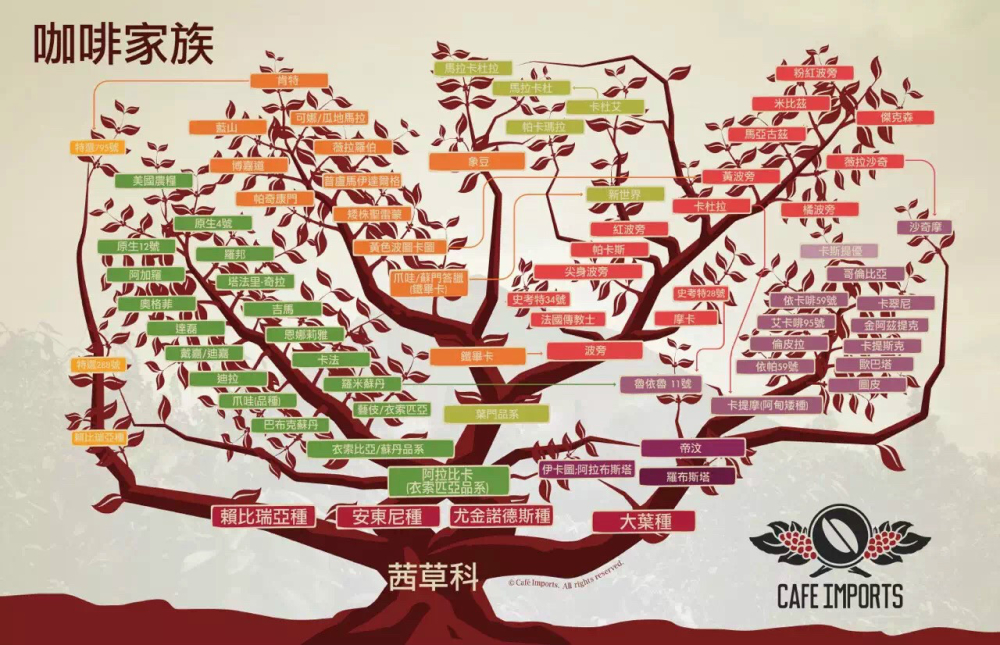
And Arabica varieties are derived from a lot of varieties! More than 85% of all coffee varieties belong to Arabica. Among them, it is divided into two strains: Ethiopia / Sudan and Yemen ~ the familiar varieties of Tieka and Bourbon and the derived varieties of both belong to the Yemeni strain.
In Rubiaceae, "Arabica" and "Robusta" account for the vast majority of coffee bean output in the world, but there is a big difference between them in terms of coffee flavor, planting conditions and market price.
In the cup test and comparison experiment of Qianjie coffee, it is found that no matter which variety of Arabica coffee beans, the overall flavor of Arabica coffee beans will be richer and more refined than Robusta coffee beans, and the overall taste of coffee will be cleaner and pleasant. The difference in flavor and cleanliness of the two varieties of coffee depends on the conditions needed for gas cultivation and the insect resistance of the varieties themselves.
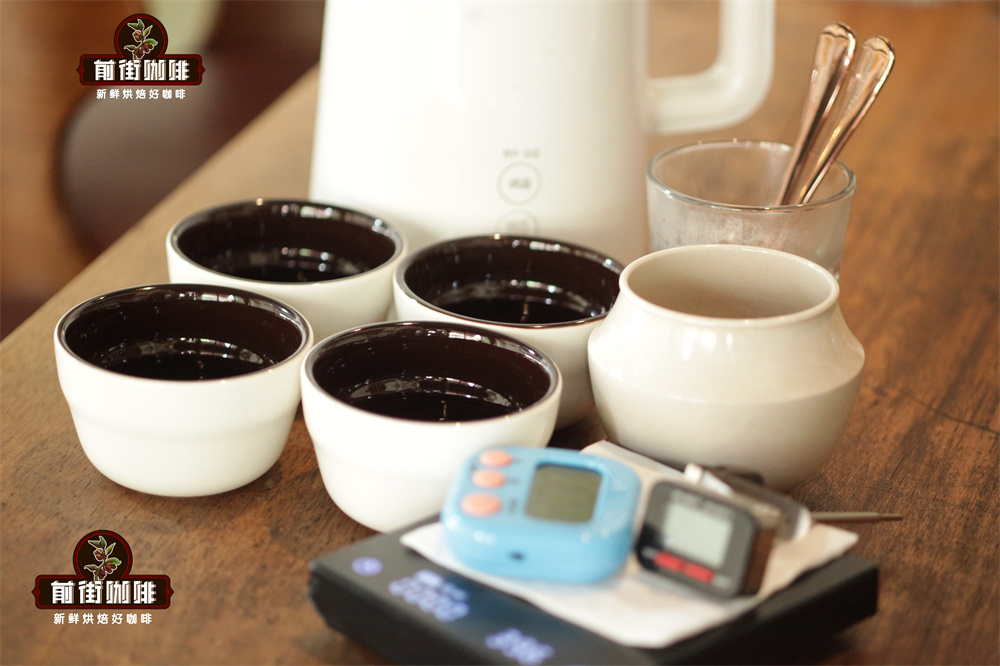
The planting conditions of "Arabica coffee beans" are relatively stringent, requiring higher elevations (more than 2000 meters above sea level), fertile soil fertility, adequate moisture, proper sunshine conditions and shade. "Arabica" coffee species are less resistant to diseases and insect pests and are vulnerable to damage. In addition, the annual output of coffee trees per unit area is also low. At present, "Arabica" coffee accounts for 75% of the world's coffee production, and in the production of Arabica coffee beans, only 15% of Arabica coffee beans can be classified as "boutique coffee" (Specialty coffee).

The "Robusta coffee beans", commonly known as "sturdy beans", can be planted at low elevations (200 to 800 meters above sea level), have strong resistance to diseases and insect pests, are not vulnerable to agricultural disasters, have a higher annual output per unit area of coffee trees, and are harvested in large quantities by machine. in general, the cost of production is much lower than that of Arabica coffee. Because of the low altitude, many Asian regions tend to have a muggy climate, and the temperature is very suitable for the growth of pests. So Robusta itself needs to produce a lot of bitter and unpalatable substance-chlorogenic acid to dissuade pests and achieve antibacterial effect (prevention of leaf rust).

As most of the flavor is masked by the bitterness of chlorogenic acid, not only bugs don't like it, but humans don't like it either! But before the rise of boutique coffee culture, Robbins coffee beans used to be beautiful, from the royal aristocracy to the modern instant coffee, Robsta has always played a very important role. Since it is bitter and sour, it is necessary to roast the coffee beans until they are black, and the bitterness brought by the caramelization process directly covers all the bad flavors, so people have been drinking coffee all the time. Sugar and milk are standard for a reason.
In terms of flavor, Arabica coffee beans have a changeable and broad potential flavor. Arabica coffee produced in different regions, different elevations and different climates usually has its own characteristics and can show a completely different flavor. "Arabica" coffee smells like grass when it is not roasted. After proper roasting, it shows "fruity" (medium light roasted) and "caramel sweet" (deep roasted). Generally speaking, it has a better aroma and flavor than Robota beans.
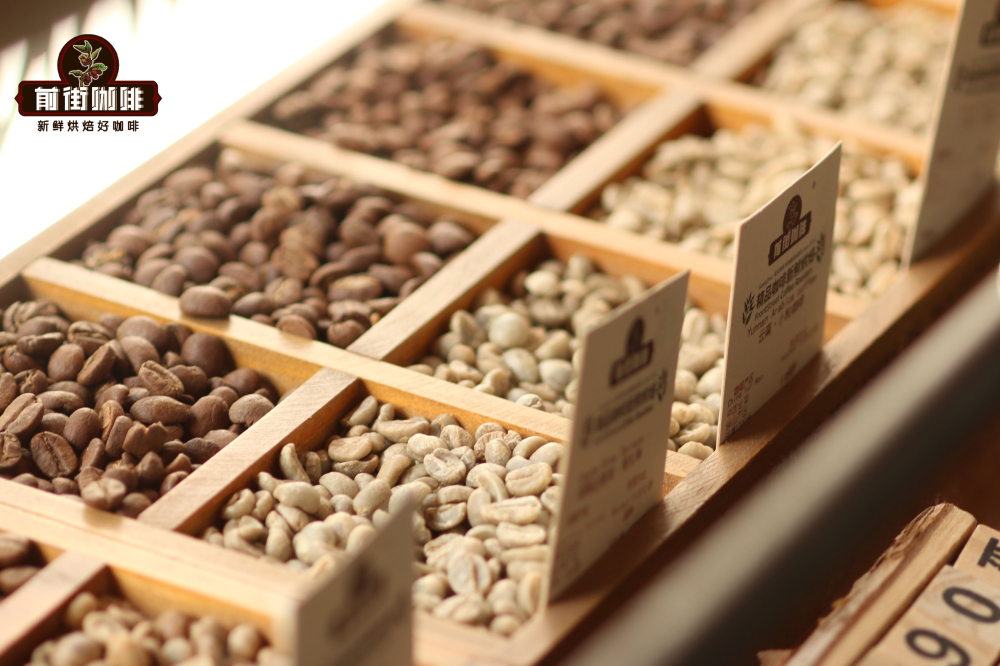
The flavor of "Robusta coffee beans" is more ordinary, rigid and even pungent. And because the vast majority of Robusta around the world are planted in low-altitude areas, the flavor produced by different regions and different climates is not very different, and there is a lack of personality. When unbaked, it smells like raw peanuts, and the taste of cheap robusta coffee beans is usually between "wheat tea" (light baking) and "rubber tire flavor" (deep baking). It is difficult to show a meticulous flavor.
However, while flipping through the relevant articles, Qianjie Coffee noticed that a small number of high-altitude, high-quality, washed robusta beans have been planted in India, and their prices are higher than most Arabica coffee beans. These will be called boutique robusta beans. And this coffee bean also shows quite clean, without the inconvenient flavor of cheap Robusta. Thicker, calmer palate and intense walnut, peanut, hazelnut and wheat flavors as if you were eating peanut butter and hazelnut.
Generally speaking, high-quality Arabica coffee beans need to be picked by hand, selected and dried in a more scientific way. On the other hand, robusta coffee beans do not need to be handled in detail, and the cost from planting to labor is much lower than Arabica coffee beans, so robusta coffee beans are also called cheap beans.
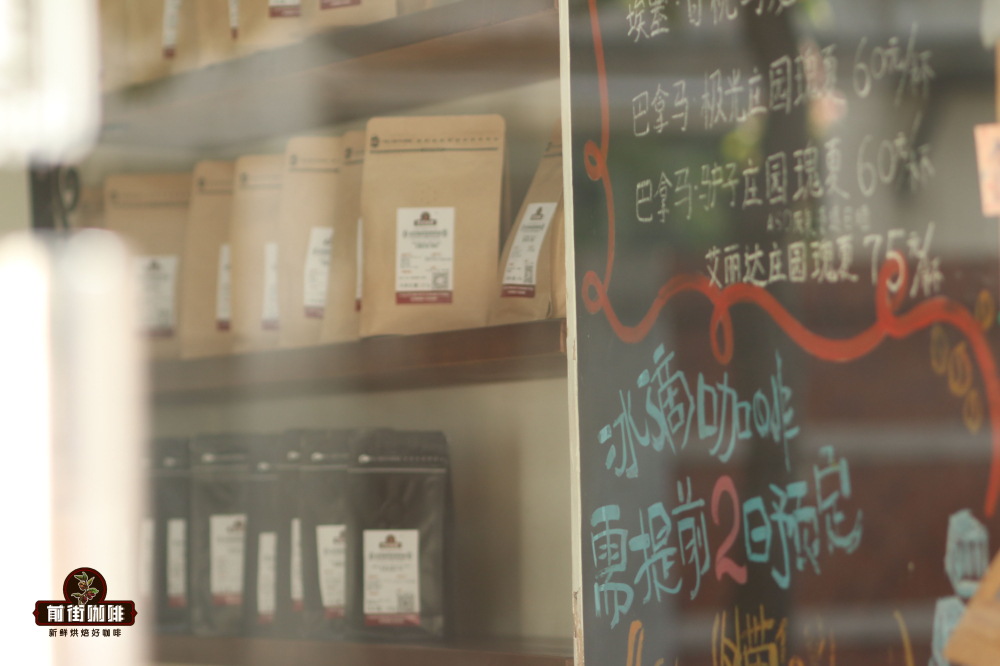
In addition to the habit of directly cooking robusta beans in some areas, robusta beans are currently used in instant coffee and Italian coffee blending with Arabica coffee. The "commercially blended coffee beans" of front street coffee add 10% robusta coffee beans to 60% Brazilian Arabica coffee beans and 30% Colombian Arabica coffee beans, so that the extracted espresso has a strong nutty flavor. the overall mellowness will also be improved.
Qianjie Coffee in addition to the "commercial mix of Italian coffee beans", other Italian coffee beans, individual coffee beans, hanging ear coffee bags all use 100% Arabica coffee beans. In order to enable everyone to get the freshest fresh coffee beans, the coffee beans ordered in Qianjie Coffee are issued within 5 days from the roasting date. If you want to have a better aroma experience of freshly ground coffee, Qianjie coffee is not recommended to be ground in advance.
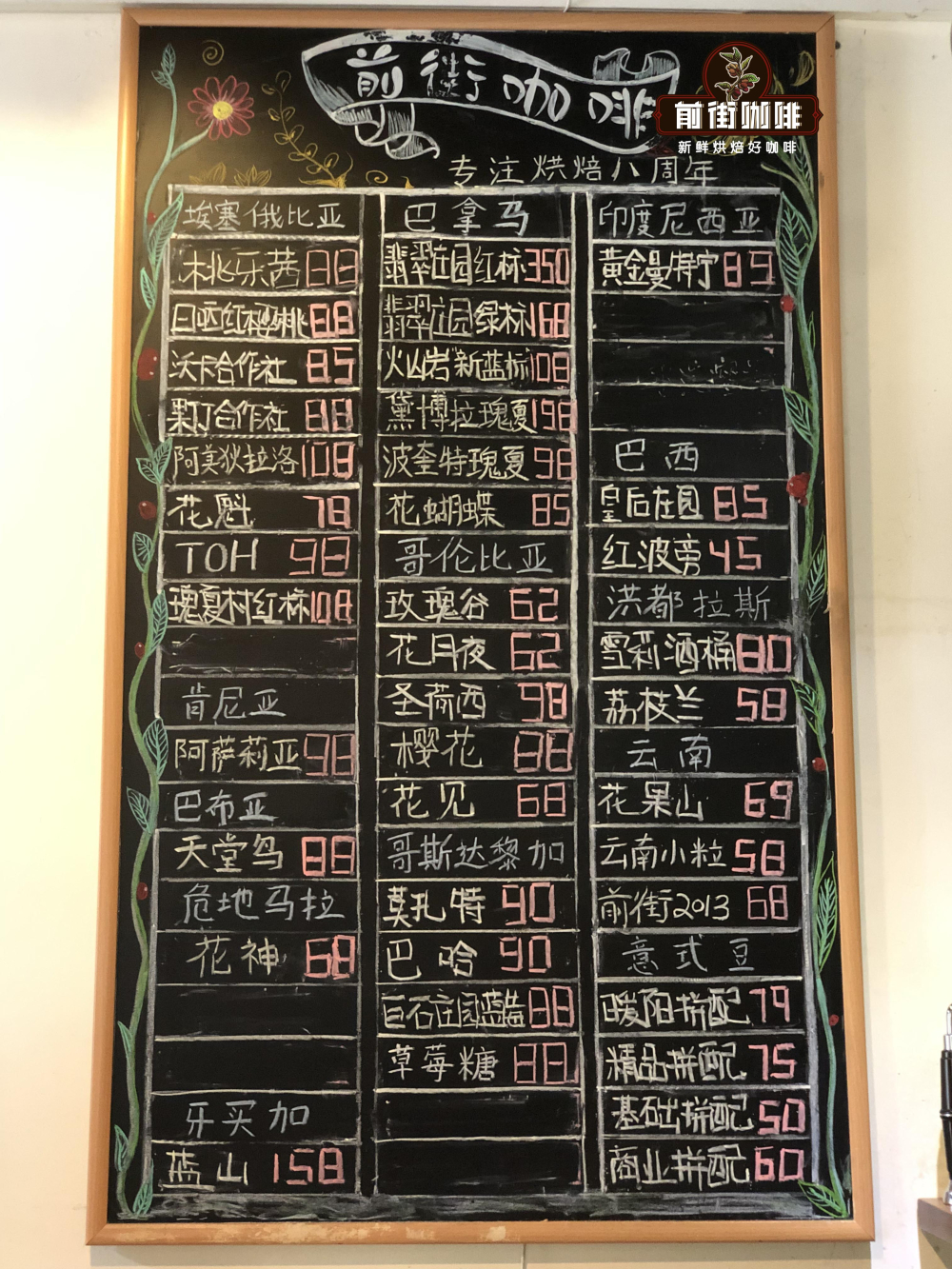
Coffee Xiaobai can choose "Front Street Coffee rations Bean Series" if he feels confused when he sees the dazzling array of coffee beans in front of the street. The rations bean series is also the facade of Qianjie coffee, because it has a higher degree of recognition of the flavor of the producing area. Qianjie will select the beans with the most local flavor in each major producing area for 100g taste packaging, such as the citric acid of the most representative famous coffee Esseyega, the herbal flavor of Mantenin in Indonesia, the chocolate and nutty aroma of Costa Rican Tara beads, and so on. So far, Qianjie has eight new production areas in different countries for everyone to choose from.
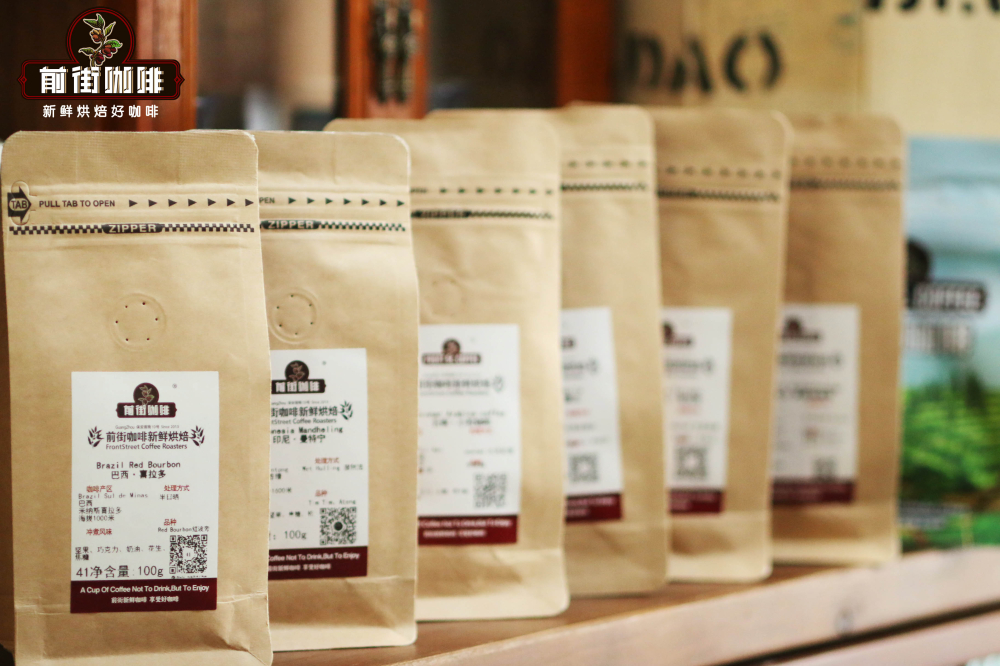
The eight coffee-producing countries include Ethiopia, Brazil, Colombia, Costa Rica, Guatemala, Indonesia, Yunnan of China and Honduras. Among them, most of the coffee beans are washed, removing the addition of peel, pulp and pectin to the coffee flavor, so that the original producing area is fully exposed. So that coffee lovers can locate their favorite producing areas through the flavor and tonality of coffee producing areas.
Professional coffee knowledge exchange more coffee bean information please follow the coffee workshop (Wechat official account cafe_style)
For more boutique coffee beans, please add private Qianjie coffee on Wechat. WeChat account: qjcoffeex
Important Notice :
前街咖啡 FrontStreet Coffee has moved to new addredd:
FrontStreet Coffee Address: 315,Donghua East Road,GuangZhou
Tel:020 38364473
- Prev

Introduction to the characteristic flavor of four forms of Ethiopian coffee beans grown and produced in Ethiopia coffee
Growth and production patterns: there are four growth production patterns in Ethiopia, and 95% of coffee is produced from these types or systems. 1. Forest grows in southern and southwestern Ethiopia, mostly wild or under natural forests. It provides natural shade for coffee trees, but the resistance is slightly weak. This production system accounts for about
- Next
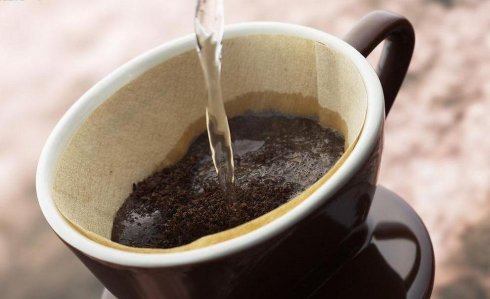
Selection of Water temperature of dripping filter Paper selection and use of hand dripping filter paper for coffee
Filter paper drip type hand flushing method, its water temperature can reach the taste balance in 82C~84C. Exceeding this temperature will make some flavors particularly obvious, and if you don't reach this temperature, you won't be able to extract enough delicious ingredients. The effect of water temperature on taste the water temperature above 88C is too high, it is easy to produce air bubbles, resulting in incomplete steaming. 88 Craft 84 C (suitable for deep and medium baking) has a strong taste.
Related
- What is the meaning of lactic acid fermentation with coffee bean treatment?
- How to judge the state of foam by sound?
- How does the latte pull out the unicorn pattern? Come to get for a little trick to improve the flower pull!
- Will flower pulling affect the taste of the latte?
- Do you know the history of coffee?
- The difference between honey treatment and sun washing what is raisin honey treatment?
- What kind of milk can a novice use to make coffee foam to keep the foam longer? The correct method and skills of milking tutorial sharing
- Why do washed coffee beans taste sour? Flavor characteristics of washed Coffee
- Introduction to the skill of how to practice the size and height of water injection around the circle of hand-brewed coffee
- How do beginners practice coffee flower drawing from scratch?

